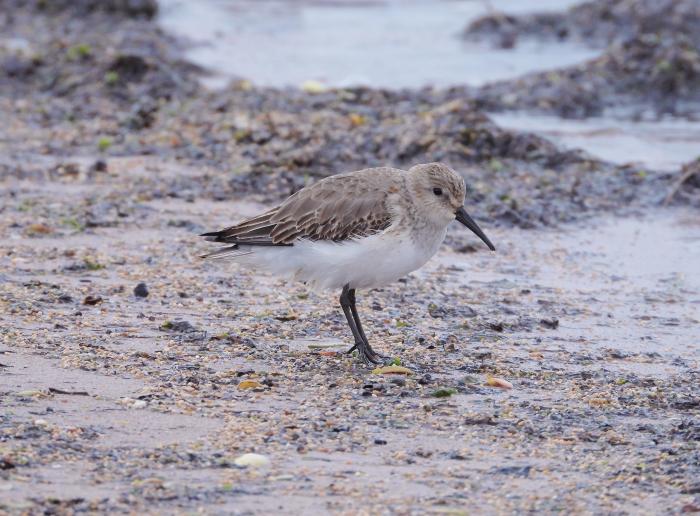
A small wader with a relatively long and dark, slightly down-curved bill, short dark legs, a pale grey back and a white belly in winter/ distinctive dark belly patch in summer. Their feeding behaviour could be described as energetic, hurrying along while probing the foreshore.
Although still a species of utmost conservation concern (red list), dunlin are our most common wintering wader. They are often seen in large flocks feeding on the mudflats and swirling around in synchronized flight across Dawlish Warren Wildlife Refuge.
The dunlin you see in winter and summer are different populations. In the winter, dunlin on the Exe have migrated from Eastern Europe and Russia, whereas in the summer dunlin on the Exe migrate south to Europe and North Africa for the winter.
WeBS counts show that wintering individuals are visiting in decreasing numbers, as climate change means the winter conditions around the Baltic become increasingly less severe.
Classified in the UK as Red under the Birds of Conservation Concern 5: the Red List for Birds (2021).
